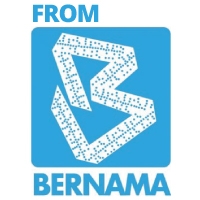KUALA LUMPUR, Oct 13 — Top Glove Corporation Bhd’s profit after tax for the financial year ended August 31, 2017 (FY17) fell by 8.2 per cent year-on-year (y-o-y) to RM332.57 million.
This was achieved on the back of an 18 per cent y-o-y increase in revenue to RM3.41 billion.
In a statement today, Top Glove said for FY17, the average natural rubber latex price was RM5.76 per kilogramme (kg), 46.4 per cent higher than the price in FY16.
The average nitrile latex price was US$1.1 per kg, up 11.9 per cent compared with the previous financial year.
However, raw material prices were on the downtrend compared with the third quarter (Q3) of FY17, with average natural rubber latex and nitrile latex prices falling 21.3 per cent and 26.4 per cent, respectively.
For the fourth quarter of FY17, PAT improved to 49.9 per cent y-o-y to RM98.2 million.
Executive chairman Tan Sri Dr Lim Wee Chai said, “We are pleased to have once again delivered good results despite a difficult business landscape.
“We attribute the robust performance to internal improvements centred on research and development, product quality, technology and reengineering initiatives, and believe that continuing to pursue these intensively is the way forward.”
Notwithstanding the challenging business environment, Top Glove will continue to expand strategically.
Its organic expansion plans include the construction of two new manufacturing facilities; Factory 31 to be operational by March 2018, and Factory 32 to be operational by December 2018, which upon completion will boost the Group’s total number of production lines by an additional 78 lines and production capacity by 7.8 billion gloves per annum.
By December 2018, Top Glove is projected to have 31 glove factories, 628 production lines and a production capacity of 59.7 billion gloves per annum.
The company has also commenced preparations for its condom manufacturing facility, expected to be operational in 2018.
The Group is also leveraging emerging technologies like Industry 4.0 and moving towards digitalisation and the implementation of “smart factories.”
It has accordingly invested in sensors and other data capturing equipment to upgrade its production lines, as it progresses towards fully automating them eventually.
In a related development, Top Glove today announced the signing of a letter of intent to acquire the entire ordinary shares of Eastern Press Sdn Bhd, a printing and packaging material manufacturer, for RM47.25 million.
The proposed transaction is expected to provide the Group with synergistic benefits, enabling it to improve its supply chain coordination, thereby allowing for flexible planning and better delivery time in relation to the supply of packaging material for its glove products, as well as better cost and quality control.
As at Aug 31, 2017, the Group maintained a healthy financial position with a positive net cash position of RM70.6 million, despite a capital expenditure of RM447.1 million.
Top Glove has proposed a final dividend of 8.5 sen, subject to shareholders’ approval at the upcoming Annual General Meeting in January 2018, which will bring the total dividend payout in FY17 to 14.5 sen, representing a payout ratio of 54.6 per cent. Bernama
China's economy has surprised analysts with its resilience so far in 2017, expanding by 6.9 per cent in the first half, though most market watchers have stuck to predictions that it would lose some momentum in coming months.
Authorities are in the midst of a campaign to reduce the risks from a rapid build-up in debt produced by years of credit-fuelled stimulus, and sustained trade growth could give policymakers confidence to step up the campaign next year once the leadership reshuffle is out of the way.
That could see a further rise in borrowing costs for companies and consumers.
Government measures to cool hot housing prices are also expected to start weighing on property investment and construction.
China is also in the midst of its toughest environmental crackdown ever, ordering many mills, chemical plants and coal companies in northern parts of the country to sharply reduce output or close in coming months to reduce its notoriously thick winter smog.
The cuts are expected to last through March and around 30-35 million tonnes of Chinese crude steel production could be taken offline, Commonwealth Bank of Australia analyst Vivek Dhar said in a note.
That translates to 42-49 million tonnes of iron ore consumption, equivalent to about 3 per cent of the global seaborne iron ore market, he said.
Still, while the pollution crackdown may slow China's economy and its contribution to global trade, growth in other sectors may mitigate the impact. At this point, most analysts continue to see a gradual loss of momentum, not a hard landing.
“There are still some infrastructure investments ongoing and some stabilisation in property investment, so I would not worry too much about the impact of environmental efforts on the growth momentum,” ANZ's Wang said. — Reuters






















